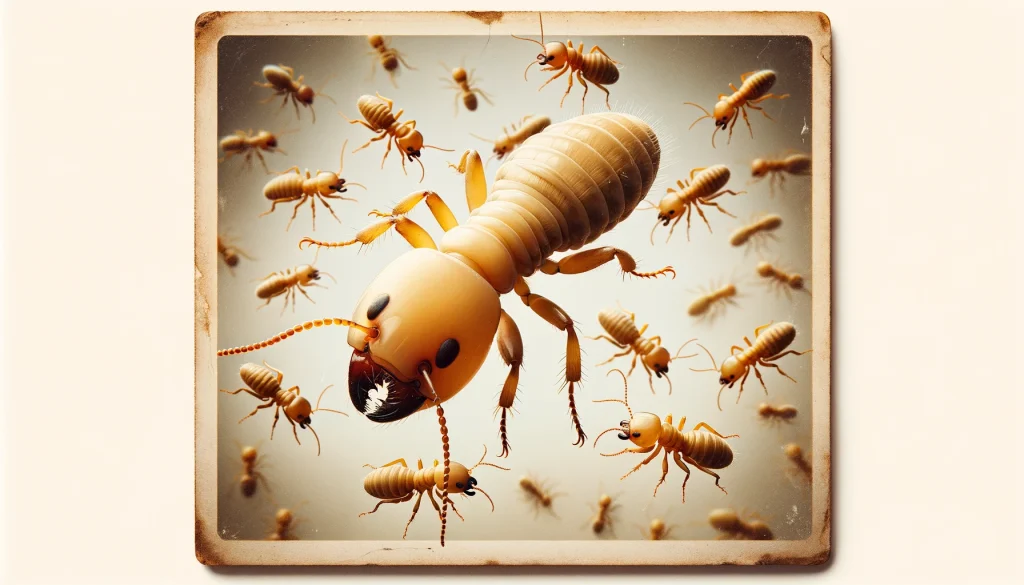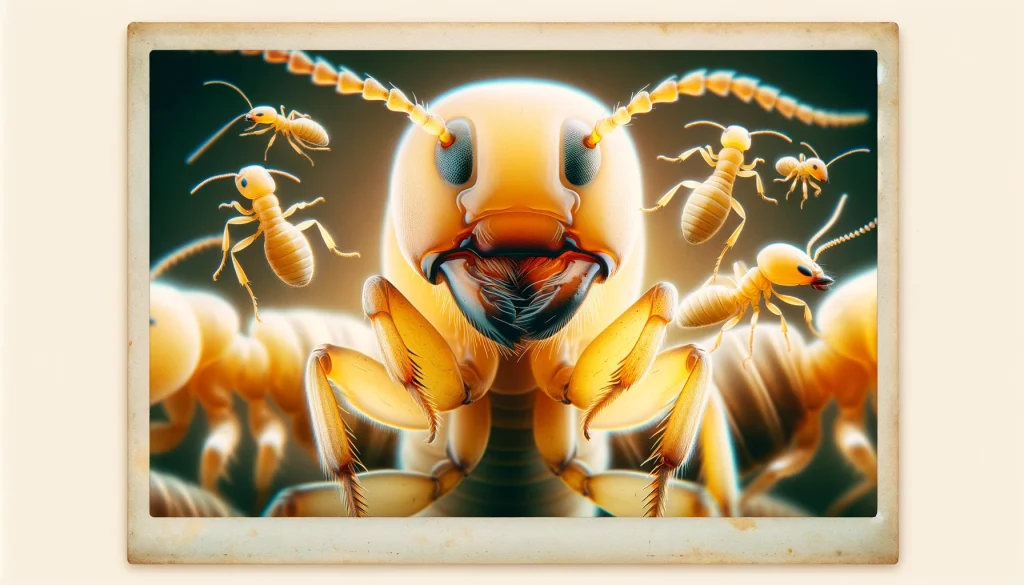Got Termites? 7 Signs of Termite Infestation

Got Termites?
Welcome to your comprehensive guide on managing termite infestations. If you’re noticing the early signs of these pests in your home, you’re not alone. Early indicators include tiny wood pellets resembling sawdust or coffee grounds, soft wood, mud tubes, and darkening or blistering of wood structures. Termites often first make their presence known in areas like furniture, door and window frames, baseboards, and crawl spaces. When an infestation becomes severe, you might see signs such as buckling wood, swollen floors and ceilings, and visible mazes within walls. You may also detect a mildew-like odor or notice mud tunnels near your home’s foundation, indicating a serious problem. Understanding what termites look like is crucial for identification. They range from 1/4 inch to 1 inch long, with a thicker, oval-shaped waist, short legs, and straight antennae. Their colors can range from beige or tan to black or dark brown. Up close, they have distinct features like straight antennae and wings of equal length.
Termites can infest any home, regardless of cleanliness, as they are attracted to cellulose-based materials present in all structures. Common misconceptions about termites include the belief that they only affect certain types of homes or are limited to specific locations. In reality, they are drawn to conditions like high moisture levels, untreated wood in contact with homes, and lack of regular inspections. In California, the most common termites include Pacific Dampwood, Western Drywood, and Western Subterranean species. Seasonal changes can significantly impact termite activity, with most activity occurring in spring, summer, and fall. A minor termite infestation can rapidly become severe, causing extensive and costly damage to homes. This can lead to a significant impact on your property and even affect your family’s well-being due to stress and potential financial burdens.
In terms of treatment, it can be challenging to eliminate termites due to their hidden nature and rapid colony growth. Professional extermination is often necessary, involving methods like bait stations, liquid treatments, and fumigation. While DIY methods exist, they may not be as effective as professional treatments. Choosing the right exterminator is vital. Look for qualifications and certifications to ensure effective and safe termite control. For those near Laguna Beach, California, seeking termite treatment services, understanding these aspects is crucial for protecting your home and family.
This guide will provide in-depth information on managing and preventing termite infestations, helping you make informed decisions to safeguard your home. Let’s explore together how to tackle this challenge.
Table of Contents
What are the early signs of a termite infestation?
Early signs of a termite infestation include mounds of tiny wood pellets, resembling sawdust or coffee grounds, known as termite fecal matter or frass. Soft wood in the home, mud tubes on the exterior (often near the foundation), and darkening or blistering of wood structures are also indicative of termites. Other common signs include frass that looks like sawdust, visible tunnels in wood, soft spots or blistering on floors, and peeling paint.
Termites are particularly attracted to excessive moisture, thus moldy and mildewy odors can signal a termite-friendly environment. Damaged wood, hollowed wood, and termite droppings are also common early signs, especially for drywood termites. Drywood termite pellets and discarded wings near windows or doors are significant indicators of infestation.
What areas are typically first infected by termites in a home?
What are signs of a severe termite infestation?
What smells or sounds are associated with termite infestations?
Where do termites usually hide in a home?
What do termites look like?

Drywood termites range from 1/4 inch to 1 inch long, with a thicker, oval-shaped waist, short legs, and straight antennae. Their wings are equal in length. Flying termites are generally beige or tan, with two straight antennae and two sets of wings equal in length. These wings are white, translucent, and veiny. Termites typically have straight antennae, wide bodies without pinched waists, and are black or dark brown in color. Swarmers have clear wings of the same length. They are usually cream-white to light brown and have six legs.
What do termites look like up close?

Why do termites suddenly appear in a home?
Can termites infest a generally clean home?
What are the common misconceptions about the causes of termite infestations?
A common misconception is that only certain types of homes or states are susceptible to termite infestations. In reality, termite infestations can occur in any home where conditions are conducive, such as excess moisture and wood-to-ground contact, irrespective of the home’s location or cleanliness.
What attracts termites in your home?
What types of termites are commonly found in California?
What conditions in a home make it more susceptible to a termite infestation?
How do seasonal changes affect termite activity in homes?
How quickly can a minor termite infestation become severe?
What impact can termites have on your home?
What impact can termites have on your family?
What are the psychological effects of living with a termite infestation?
Can termites cause or aggravate respiratory problems or allergies?
It is important to consider that the presence of termites and their debris in a home could potentially affect indoor air quality.
Do termites bite?
Can termites attack or harm pets?
What are the distinctive behaviors of termites compared to other household pests?
How to get rid of termites from your home? Is it hard?
How long does it usually take to fully exterminate termites from a home?
What are the typical costs associated with professional termite extermination?
The cost of professional termite extermination varies based on factors such as the extent of the infestation, the type of termites present, and the chosen treatment method. Shimmy Pest Control, like Terminix and Orkin, for example, offers free initial inspections to determine the best treatment plan and associated costs.
DIY or hire an expert?
While some preventive measures can be undertaken by homeowners, for effective extermination of termites, hiring an expert is recommended. DIY methods may not fully address the problem and can lead to further damage and costs.
What are the major advantages of going with an expert?
What are the major downsides of going with an expert?
What are some natural treatments for getting rid of termites?
What preventive measures can be taken to avoid termite infestations in homes?
What qualifications and certifications should you look for in a professional exterminator?
Are you near Laguna Beach, California?
Shimmy Pest Control is headquartered in Laguna Hills, California, and operate in surrounding cities, counties, and hubs that include but aren’t limited to; Laguna Woods, Mission Viejo, Laguna Niguel, Aliso Viejo, Lake Forest, Laguna Beach, Ladera Ranch, Irvine, Ranch Santa Margarita, Dana Point, Newport Beach, San Clemente
Do you need a termite treatment service?
Shimmy Pest Control addresses a variety of pests, rodents, and termites common in California. We offer a free termite inspection as well. Contact us for termite treatment, removal, or ongoing management and prevention of termites.

1whqps
кракен ссылка
kraken vk4
мега спб ссылка рабочая
МЕГА link